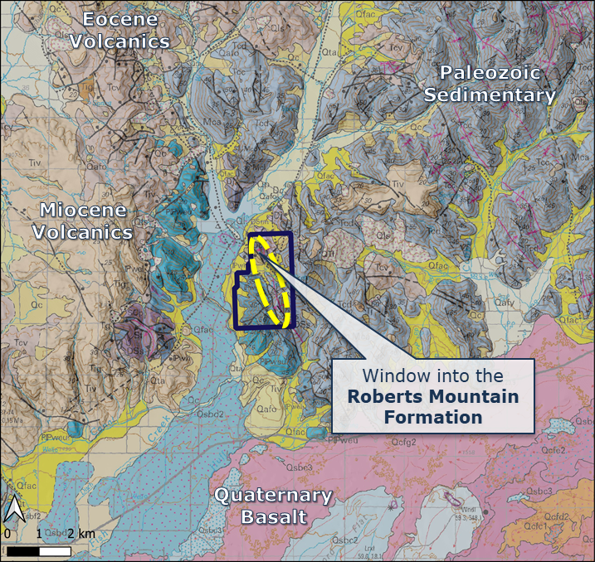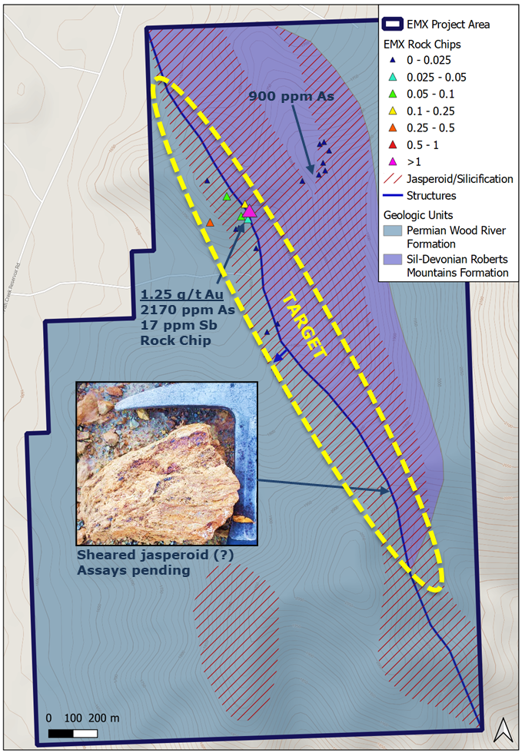Timber Butte, Idaho
The Timber Butte project is located 15 km NE of Carey, Idaho. The project is a Carlin-type Au project within a regional structural zone and is hosted in the folded and faulted Roberts Mountains Formation, a main host to mineralization in the Carlin Trend, Nevada.
Host rocks are the Silurian-Devonian Roberts Mountains Formation silty limestone and Pennsylvanian-Permian Wood River calcareous/siliceous conglomerate. Structurally, the Timber Butte project has mineralization localized along a NW-striking normal fault juxtaposing the Roberts Mountains and Wood River Formation units. Alteration consists of jasperoid in limestone and silicification/decalcification in clastic units.
The targets at Timber Butte are surface mineable, oxide Carlin-type gold. Surface samples have up to 1.25 g/t Au (n=19, avg. 0.1 g/t Au) in rocks within major NW-striking mineralized structure. There was limited historic rotary drilling (~10 holes?) in 1970s. Timber Butte has widespread jasperoid, silicification, and decalcification over 2.5 km x 0.75 km surface area and 300m of vertical relief. There is minimal outcrop with shallow soil and alluvial fan cover of portions of mineralized structure.
Note: The nearby mines and deposits mentioned above provide context for EMX’s Project, which occurs in a similar geologic setting, but this is not necessarily indicative that the project hosts similar tonnages or grades of mineralization
Maps

 Click to Enlarge
Click to Enlarge
 Click to Enlarge
Click to Enlarge